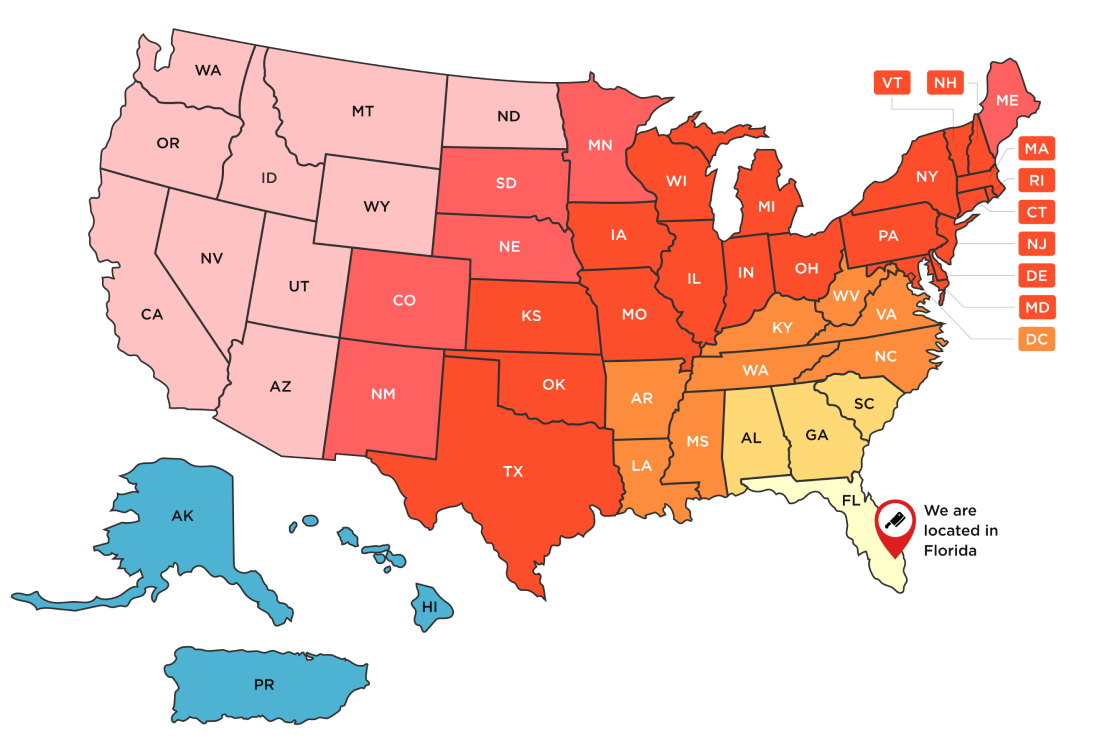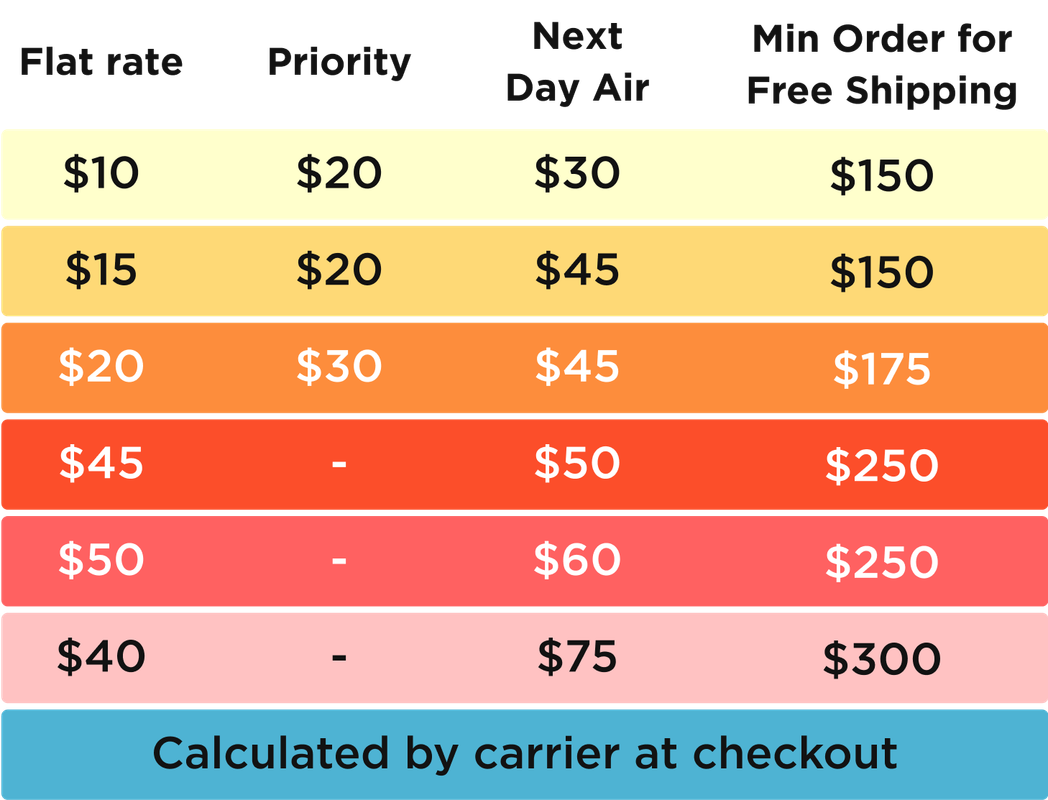
Everything You Need To Know About Steak Marbling
The marbling on beef is often touted as the be-all and end-all for judging the tenderness of a steak. This couldn't be further from the truth. There are actually several factors which influence the tenderness of a steak and steak marbling is not the only one, nor in fact, even close to being the most important one.
In this article, we're sharing our expert experience to help you understand a few myths surrounding meat marbling and how to guarantee you're getting your money's worth when buying beef for tenderness.
Steak Marbling Does Not Guarantee Tender, High Quality Beef
In a previous article, we explained the way the USDA inspects and grades meat. The top grade is called USDA Prime. It is the highest distinction of quality and has a high degree of marbling (intramuscular fat). The result is a VERY flavorful steak when cooked.
This is why so many famous steakhouses use the word PRIME in their name (that, and a lack of creativity).
USDA Prime Graded Beef Does Not Guarantee Tenderness
In the past, only 2% of all the cattle raised in the US would make this grade. More recently, that number hovers between 5% and 7%. There is more beef grading Prime (which is great!) but it does not mean all of that Prime beef is just as good, just like not all USDA Choice is equal.
Prime Grade beef is guaranteed to have excellent flavor, but it does NOT guarantee the other most significant factor that defines a great steak: Tenderness. This also helps to explain why not all wagyu is the same.
Tough meat cannot be recognized by the eye when you are buying at the supermarket. Marbling is not a driving indicator of tenderness (marbling accounts for a mere 10% of the variation in tenderness). Breed and sex also have relatively little effect on tenderness (at least when we are looking at Angus, Holstein and Hereford breeds).
This is why paying for things like G1 certification are becoming more and more important to select the best quality of beef.
What Actually Makes Beef Tender?
Now that we have established that marbling or even a beef grade does NOT impact the tenderness of beef, we can delve into what does:
1. Aging
All beef in the US is aged (which is why we have the greatest beef industry in the world alongside Japan and Australia). However, not all beef is aged the same.
Beef is initially "aged" right after slaughter when the carcass is hung and kept at a certain temperature for 7 and up to 14 days. Getting this right makes a difference.
After the beef is broken into primal pieces, those may also be wet aged and most commonly for 7 days. G1 beef is wet aged for 30 days. These extended aging techniques make a difference to the tenderness of the beef, but also add a premium to the price of the steak you get at the counter.
2. Humane Practices: A Peaceful Sleep
According to research in Australia and New Zealand, also backed by research in the US, stress is one of the most important influences on ultimate meat tenderness.
Ideally, animals should be rendered unconscious by electrical stunning immediately prior to slaughter. This way, the animal passes away peacefully and the muscles do not stress. If an animal is stressed, adrenaline is pumped into their muscles which creates beef that's tough, has a high PH and is tasteless.
We work with farmers who follow these ethical slaughtering standards but it also adds a premium to the end price.
3. Age At Slaughter
Younger animals will always be more tender (that is why the cochinillo is so much more tender than a regular pig). As animals get older, the amount of connective tissue (collagen) increases and as that happens, the connective tissue becomes resistant to dissolution when cooking. Consequently, beef from older animals is less tender.
This is an important point. Older animals will usually have more marbling. Old dairy cows can be slaughtered and graded PRIME. Yet they will be significantly less tender than a steer slaughtered at the right age (they will also taste more acidic).
This is why you can find "Prime" steaks, that are significantly cheaper than other "Prime" steaks. Beef is a commodity. You cannot cheat price.
4. Genetics
Tenderness is heritable. Tender sires have tender calves.
Programs that are known for generating quality tender beef will have a leg up vs programs that do not. That said, even the most tender meat derived from progeny of the most select of sires can be ruined by stress before slaughter. So a "good" farm can go "bad" really quick by changing slaughterhouses or getting acquired.
Finally, many new studies are showing the pH of the meat is as important as the marbling, so much so that certain programs are graded on only pH rather than marbling. While marbling is the visually appealing characteristic that gets us drooling, there are many other factors that play into how the steak will perform.
You Cannot Cheat Price
In order to compete in pricing, many producers/butchers cut corners to achieve a lower price point. There is nothing wrong with this practice, except when they pretend that they are not.
In order to produce less expensive meat, a producer can work with older cattle, which is often dairy cattle (marbles better, sells for cheaper). The difference in a ribeye will be discernible to the eye, however, it won't be in other cuts such as tenderloin, picanha (coulotte), tri-tip, etc.
This why you can find "USDA Prime" picanha at half the price that top purveyors such as Meat N' Bone sell for. We believe our consumers are OK paying the premium for more tender meat. That is why we pay for beef with G1 certification which, unlike the inspection of the USDA, goes much beyond beef marbling. We also work with smaller producers and programs in both the US and Australia. Smaller programs by default will typically do better at quality control.
All of our beef is held to the highest standards in the industry, and yes it has a premium attached to it. It is not a huge premium, but one we believe our customers value.
Tender beef is better tasting, easier to digest and just nicer to enjoy. There are OTHER factors outside of marbling and tenderness that make a difference such as the acidity of the meat but that is a conversation for another day.
Want To Learn More?
Collagen and it's effect on meat tenderness: A very detailed page, with photos, discussing the role of collagen (mainly) in meat.
http://www.aps.uoguelph.ca/~swatland/ch2_3.htm
Electrical Stimulation: The use of high-voltage electrical stimulation to improve meat tenderness and quality, PDF file at the Meat Science Department of Texas A&M, USA.
http://savell-j.tamu.edu/pdf/es.pdf
← Older Post Newer Post →








